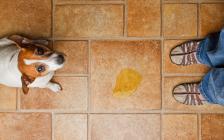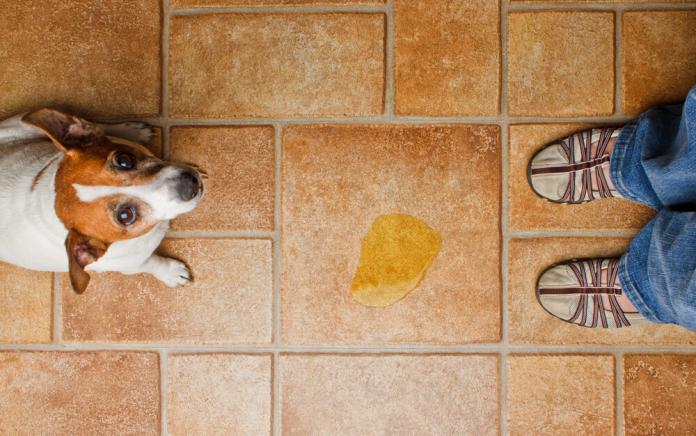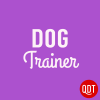How to Housetrain Your Dog
Learn housetraining 101 and get the basics of housetraining puppies, step by step.

How to Housetrain Your Dog
Good news: Housetraining is simple, really it is. Two rules cover it:
-
Make sure your pupil has plenty of appropriately timed opportunities to eliminate in the right place.
-
Supervise and/or confine your pupil in between toilet outings, so that she doesn’t have a chance to eliminate in the wrong place.
How to Tell When a Puppy Needs to Go
Here’s what the rules mean in practical terms. Very young puppies have almost no voluntary control over their bladder and bowel muscles; basically, by the time they feel the urge to go, they have gone. That means you need to get your puppy to the toilet area fast and often. For a 9-week-old, that can be every waking hour, plus the following:
-
immediately on waking in the morning or after a nap
-
after a few minutes of playing or chewing
-
a few minutes after eating or drinking
-
whenever there’s any excitement
-
whenever you catch them circling, sniffing the floor, or generally acting restless
Carry your puppy outside to prevent those last-second squats by the front door. If you’re slick you can clip her leash to her collar as you go.
Housetrain Your Puppy By Taking Her to a Pee Spot Outside
Bring her outside, on leash, to a place where you’d like her to eliminate, and stand there quietly. Give her three minutes. If she does eliminate, praise calmly and warmly, give a treat, and take her for a walk. The walk is a reward for eliminating. It encourages the pup to eliminate as soon as she reaches the designated spot. If she urinates right away, and later defecates during your walk, you can reward the outdoor defecation; no need to reward any urinations after the first one.
If after three minutes she doesn’t eliminate, take her back inside, but keep her on leash with you, or tethered to a piece of furniture with a comfy bed to lie on, or in her crate, or in a small confined area like a playpen. Wait 15 minutes to 30 minutes and take her outside again. Repeat this process until she eliminates outside, then praise, treat, and reward with a walk.
Supervise Your Puppy Even When She’s Just Peed and Pooped
Supervise your puppy carefully–and remember, if you’re texting, you’re not supervising!
When you know your puppy or dog has an empty bladder and bowels, he can spend a few minutes unconfined. But you’ll need to supervise carefully, watching for any sign that he needs to eliminate again. “Supervise carefully” is code for “keep your eyes on him every single second.” As this implies, you and your puppy should be in the same room. By the way, if you’re texting, you’re not supervising.
Ten minutes at large is a good starting point; when time’s up, either bring your puppy to his elimination spot again (Has he eaten, drunk, played, chewed? Does he just kindasorta seem to need to go?) or confine him in his crate or pen. Yes, puppies need exercise and attention; like other babies, they also need plenty of rest and sleep.
Keep Your Puppy in the Same Room with You
Even when your puppy is completely empty, give him access to only the room you are in for now. When you and he have been 100 percent successful for 1 week, you can begin expanding his “empty time” freedom room by room. Spend time with him in each room, feeding him and cuddling him there, to help him perceive this new space as part of the den.
How Long Can Your Puppy Hold It?
It used to be said that a pup could hold it for a number of hours equal to his age in months, plus one. Individuals vary a lot, but don’t bet on your 4-month-old hanging on for 5 hours at a stretch! Increase the time between toilet breaks by 15 or 30 minutes a week at first, if your housetraining is going well. And I don’t like to ask even a grown dog to routinely go longer than 5 or 6 hours without a toilet break except overnight.
If you have to leave your puppy home for longer than he can reasonably hold it, the best bet is to have a walker in. As an alternative, set up a puppy playpen with absorbent material in one area. Or you can leave the puppy in a puppyproofed room (hard floor, no access to items the puppy can destroy by chewing on them, nothing dangerous accessible). There’s no guarantee that the puppy will eliminate in the designated area, remember.
How Long Will Housetraining Take?
How long does housetraining take? It depends! Some puppies get the idea pronto and start signaling a need to go out even though they can’t yet hold on till they get there. Others aren’t reliable for a long time. Puppies become able to sleep through the night long before they’re reliably housetrained. That’s because the metabolism slows during sleep, and so does production of urine and feces.
Finally, some small breeds have a rep for being difficult to housetrain; trainers opine endlessly about whether this is a real breed characteristic or a function of the fact that a small dog starting to squat is less conspicuous than a large dog doing so, so that people don’t prevent as many mistakes.
What About Mistakes?
A few mistakes are inevitable and won’t ruin your housetraining program. If you have more than two or three in the first week, or if you can’t seem to get the number of accidents down over time, housetraining ain’t happening. Try giving your trainee more potty opportunities, less house freedom, or both. Sometimes medical problems interfere with housetraining.
If your puppy eliminates indoors, just clean up the mess calmly and cheerfully. Use a specialized enzymatic cleanser. Scolding, spanking, and other punishments are pointless—as far as we can tell, dogs don’t see urine and feces as disgusting. Besides, punishment may make her afraid to eliminate in front of you. Your booby prize is a dog who doesn’t pee or poop on walks and instead leaves surprises behind the sofa.
Many trainers suggest a clap or other sharp noise to interrupt a puppy who’s just getting ready to go. The idea is that then you bring her outside to finish up, and reward her when she does. I’m not wild about this tactic. For a sensitive pup, interruption may bump right up against startlement and fear. Don’t try this tactic at all with a puppy or dog whom you already know to be timid. And if you do use it and your puppy seems at all scared, abandon the experiment.
Anyway, housetraining goes faster if you keep mistakes to a minimum. Grit your teeth, drag yourself out of bed, don’t tell yourself it’s just a few minutes till the commercial break, and watch that pup!
You can find a more detailed guide to housetraining in the Notes section of my Facebook page. Post comments and questions there, or email me at dogtrainer@quickanddirtytips.comcreate new email. I read all your comments and questions, and I may use them as the basis for future articles. You can also follow me on Twitter, where I’m Dogalini. Happy housetraining!
Image courtesy of Shutterstock


